

William Stopford
The cars revealed in 2025 we wish would come to Australia
15 Hours Ago
I dive deeper into outrageous claims from the Climate Council, which supports new government regulations that seem out of touch with regular consumers.

Founder
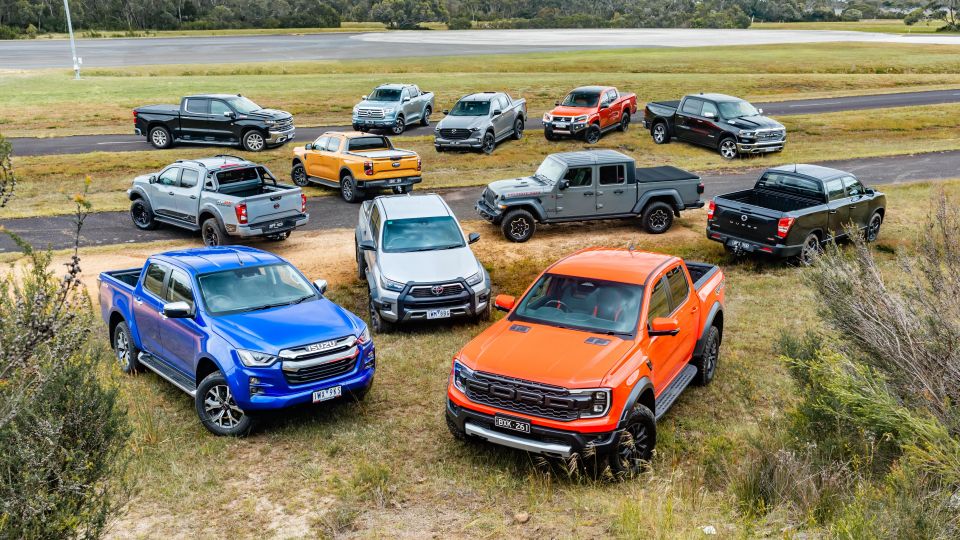

Founder
OPINION
We get a lot of spammy press releases flood our inboxes each day, but this one took the cake.
It was titled “Filthy Five: Toyota, Ford among car companies polluting more than Australia’s coal mines.”
It caught my eye, because I wanted to better understand how whoever wrote it came to that conclusion.
Then I spotted Climate Council and I knew I’d be in for some interesting commentary.
According to the Climate Council, the so-called ‘filthy five’ – Ford, Toyota, Mazda, Hyundai and the Renault-Nissan-Mitsubishi Alliance – emit more than some of Australia’s biggest coal mines.
There are also some slick quotes in the press release, like, “Transport is Australia’s fastest growing source of climate pollution, with cars, vans and utes making up almost two-thirds of transport pollution.”
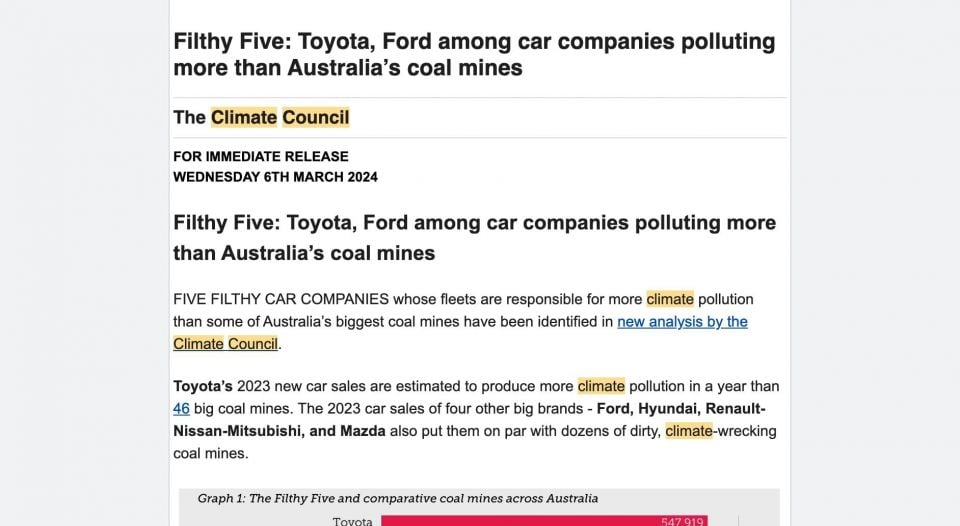
What they forget to mention is that transport pollution from passenger vehicles makes up just over 10 per cent of Australia’s overall emissions – so just 1/10th of all of the emissions Australia produces each year.
My other favourite was: “That’s why Australian vehicles use 20 percent more petrol than American vehicles, which we pay for with our well being and at the hip pocket.”
It’s a strange comparison, given the three best-selling vehicles in the US last year were the Ford F-Series, Chevrolet Silverado and Ram pickup truck ranges. Together, they accounted for around two million of the total 15.5 million new vehicles sold in the US in 2023.
The Ford F-150 comes with a mix of turbocharged petrol V6, naturally aspirated V8 and supercharged V8 petrol engine options. There is also an electric version, the Lightning.
The best possible fuel economy you can get from an internal combustion F-150 is the entry-level 2.7-litre turbocharged petrol V6, which consumes just over 10 litres of fuel per 100km.

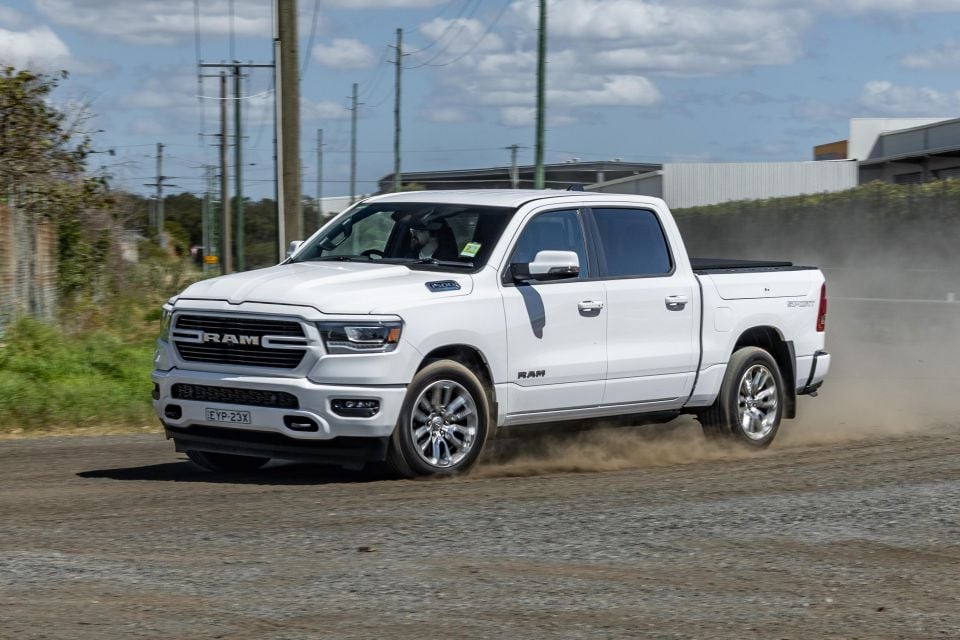

Over at Chevrolet there’s a mix of turbocharged petrol four-cylinder, naturally aspirated V8 and turbocharged diesel – and that’s before you step up into the bigger Silverados beyond the 1500. The best fuel economy you’ll get with a Silverado is just under 11.8L/100km.
The Ram 1500 is a similar story with a naturally aspirated petrol V6, naturally aspirated V8, supercharged V8 and, coming soon, turbocharged six-cylinder, electric and range-extender options. Best economy you’ll find with a Ram 1500 in the US is 9.4L/100km.
If you compare that mix to the three best-selling cars in Australia (two of the three are members of the hit worker’s band, the ‘filthy five’), you’ll find the Ford Ranger, Toyota HiLux and Isuzu D-Max.
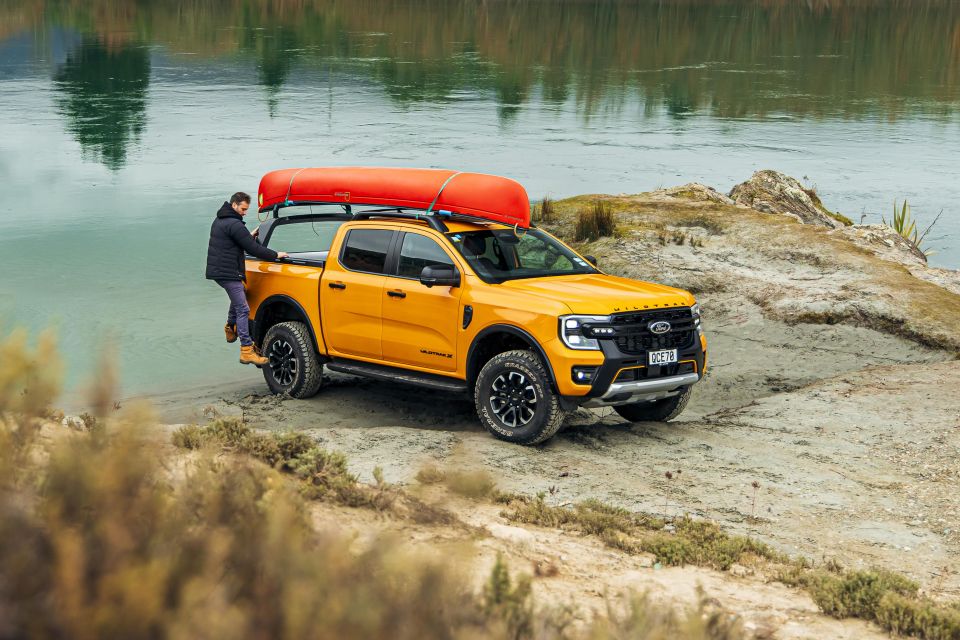
Ford offers a mix of turbocharged four- and six-cylinder diesel engines, along with a turbocharged V6 petrol engine. Best economy over at Ford is 7.6L/100km.
Toyota offers a four-cylinder turbocharged diesel and a naturally aspirated four-cylinder petrol. The best HiLux economy is 7.5L/100km, while Isuzu offers just turbocharged four-cylinder diesel engines with a best fuel economy of 7.0L/100km.
When you actually look at the vehicles Aussies are buying, Australia’s best-selling cars consume on average around 30 per cent less than the three best selling US vehicles. And we’re looking at the best case examples here – US pickup trucks sales in the US are primarily higher-grade trims with bigger engines.
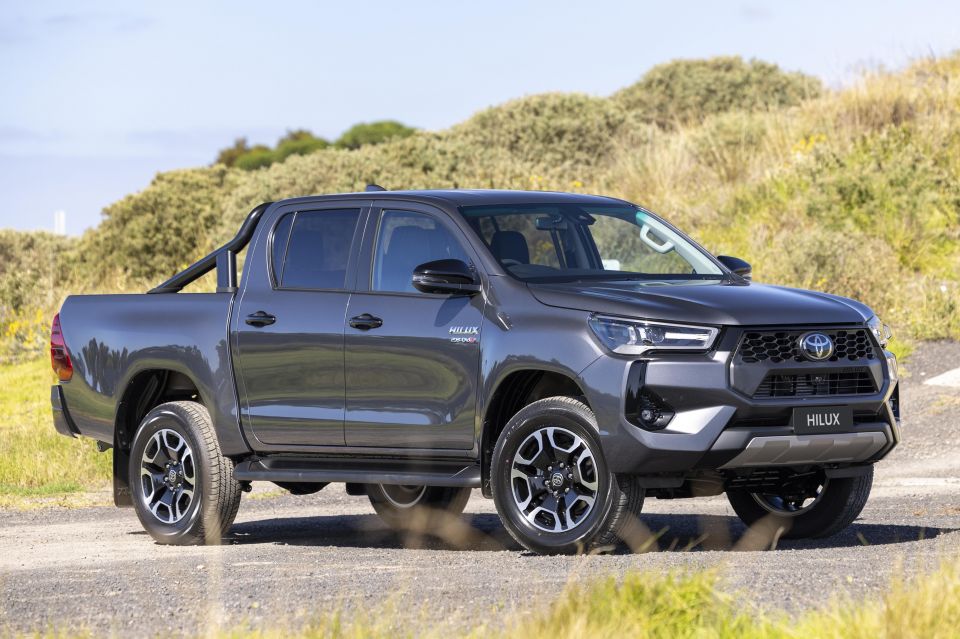
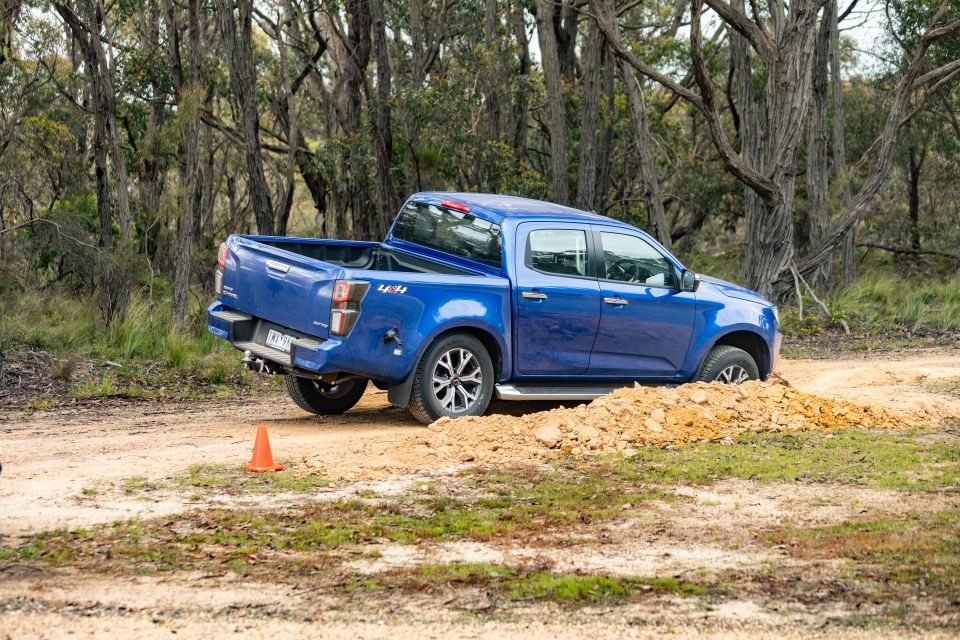
Perhaps the Climate Council was confusing petrol with diesel in their figures? Or perhaps they just cherry-picked petrol as an example hoping that nobody would notice that our best-selling vehicles are in fact primarily diesels?
The ultimate hypocrisy comes from the Climate Council itself, though. The Climate Council is a ‘community funded’ charity. Being a registered charity, they are obliged to publish an annual report each year that details their income and expenditure.
The Climate Council wants to dictate what you should drive, but in a demonstration of how totally out of touch with the cost of living crisis they are, they expect you to drop $70,000 on an electric SUV to help meet their cushy emissions targets.
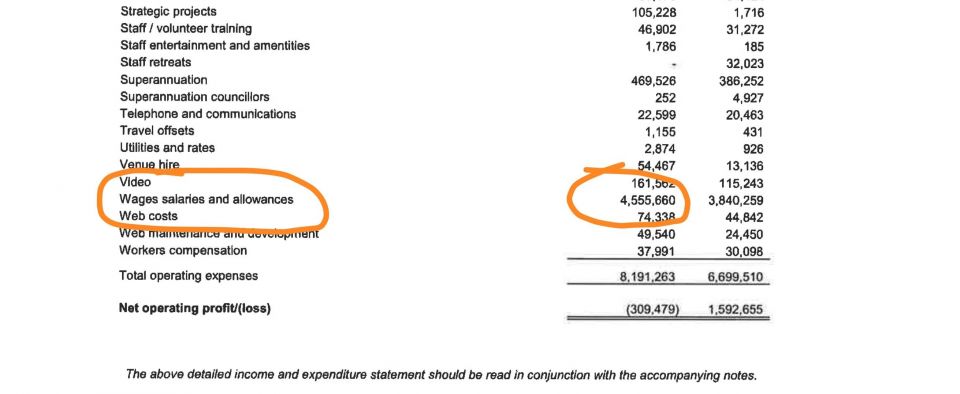
It all makes sense when you dive into the annual report and see how much employees of the Climate Council are paid.
By the end of financial year 2023, just over $4.5 million was spent on wages according to the annual report. The Climate Council has 30 full-time employees and 21 part-time employees, with a full-time equivalent of 44.1 employees (the total number of employees you have if you combined part-time employee hours into a full-time set of hours).
Dividing the two, the average employee salary is over $100,000 per year. In 2022 the median Australian income was just $65,000 per year. So it’s not hard to see why they’re happy to recommend Australians buy more efficient zero-emissions vehicles – because they’re in a privileged position to do so.

That average employee salary figure includes just under $650,000 allocated for ‘key management personnel’. That includes senior management and six directors.
The thing that floored me, though, was how much the Climate Council spent on domestic travel. It was just under $230,000 for the year. That’s a little under 1000 flights between Melbourne and Sydney (assuming $250 for one way of travel). And let me guess, those trips were on an emissions-free electric plane, train or bus? Probably not.
Just on those plane trips alone conservative estimates for the emissions from a Boeing 737-400 with a journey like Melbourne and Sydney are about 92kg per passenger, per hour. So if those estimates are correct and the assumptions on plane travel are right, it’s about 92,000kg of CO2 emissions just on the Climate Council’s domestic flights alone.
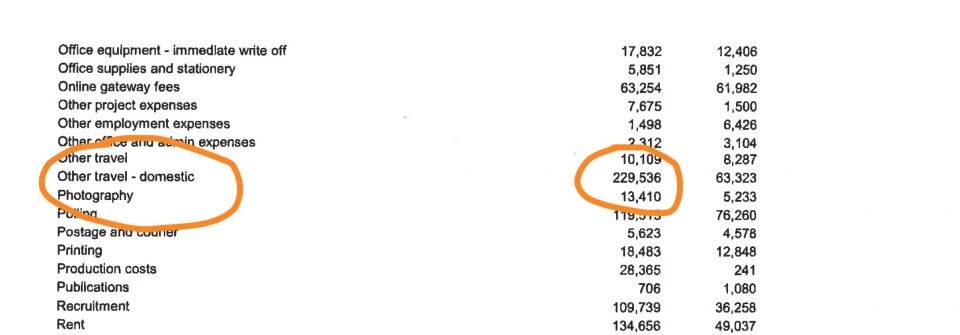
Also, don’t think for a second that cars won’t become more expensive. Toyota has already admitted it will pass the cost of any penalties on to consumers. Mazda and Mitsubishi have also intimated they will pass costs on. I mean, they are businesses, how that wasn’t obvious to the government before they came up with this half-baked idea is beyond me.
And then guess who takes the ultimate burden of those cost increases? Consumers. Dual-cab utes are bought privately, but they are also bought by businesses. Businesses have record cost pressures and adding the increased cost of a work utility into the mix will result in the services they provide costing you more.
I think it’s fair to say that not one person in Australia – or even the world – wants any negative effects from climate change. The only reason so many people are against this new tax is because it makes no sense at all for Australia. If consumers had alternatives for dual-cab utes that were emissions-free or more efficient, affordable, but still as capable, they’d be lining up to buy them.
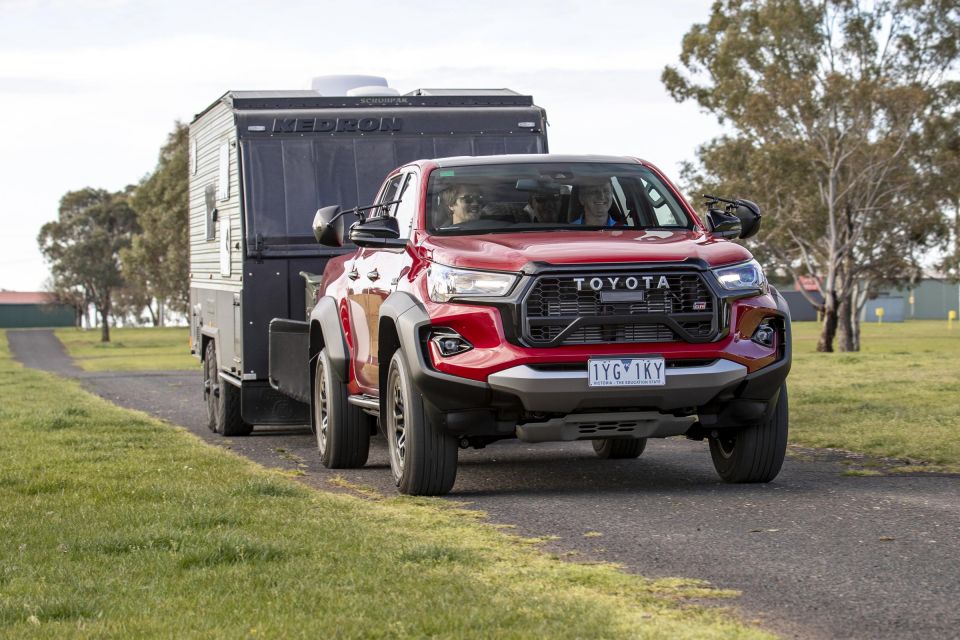
But as it stands, you have a single fully electric dual-cab ute on sale in the LDV eT60, which costs double the price of an entry-level HiLux and is barely capable as a dual-cab ute in comparison.
Then, if you’re living the great Australian dream and driving around the country or towing a caravan or boat away with the family, you don’t have a logical and capable alternative to purchase that is fully electric, or even hybrid.
All this new tax does is increase the cost of living and makes Australian living conditions even more dire. And having pompous lobby groups like the Climate Council, full of big-dollar fat cats, trying to tell you what to drive simply adds insult to injury.
Paul Maric is a CarExpert co-founder and YouTube host, combining engineering expertise with two decades in automotive journalism.


William Stopford
15 Hours Ago


Josh Nevett
16 Hours Ago


Ben Zachariah
1 Day Ago


CarExpert.com.au
2 Days Ago


Damion Smy
2 Days Ago


Damion Smy
2 Days Ago